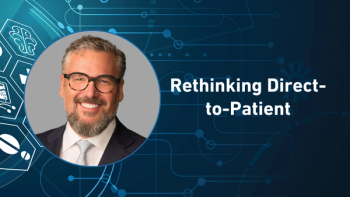
Scaling Obesity Drugs Responsibly
In the fourth part of his Pharma Commerce video interview, Hyung Heon Kim, CEO of MetaVia, explains the market dynamics or stakeholder misalignments that need to be resolved in order for the next generation of weight-loss drugs to reach scale without overburdening payers.
In a video interview with Pharma Commerce, Hyung Heon Kim, CEO of MetaVia, describes how the current US payer ecosystem, including commercial insurers and Medicaid, exhibits a divided approach when it comes to supporting access to obesity medications. Coverage largely depends on whether obesity is accompanied by additional health complications. He explains that there are essentially two categories of patients: those who are obese without any complications and those who are overweight or obese with related conditions, such as type 2 diabetes or Metabolic Dysfunction-associated Steatohepatitis (MASH).
For patients who fall into the second category—those with complications—insurance coverage is typically available. This is because obesity-linked conditions like type 2 diabetes are recognized as serious health issues that require treatment. Payers are prepared to provide coverage in these cases, acknowledging the need for medical interventions that go beyond lifestyle changes alone.
However, for individuals who are obese but otherwise healthy, coverage remains limited. Kim highlights that the current administration does not fully recognize obesity as a disease on its own, instead viewing it as a condition that can be managed through lifestyle interventions, such as diet and exercise. This perspective means that insurance companies are less inclined to cover obesity medications for patients who do not have related health complications.
Kim suggests that this approach overlooks the broader benefits of proactive obesity treatment, which can prevent complications before they arise. While insurers and Medicaid seem prepared to handle cases with associated conditions, they are not yet structured to provide long-term affordability and access for individuals seeking preventive care solely for obesity. In essence, the payer ecosystem is ready for treatments tied to co-morbidities but lacks readiness and policy alignment for covering obesity medications in otherwise healthy patients.
He also comments on how dual-action metabolic therapies address clinical or tolerability gaps observed in first-generation GLP-1s; alternative reimbursement or value-based contracting models that could be feasible in the short term, given CMS’ decision not to finalize coverage for obesity medications in 2026; market dynamics or stakeholder misalignments that need to be resolved for next-generation weight-loss drugs to reach scale without overburdening payers (from a commercialization standpoint); and much more.
A transcript of his conversation with PC can be found below.
PC: From a commercialization standpoint, what market dynamics or stakeholder misalignments need to be resolved in order for the next generation of weight-loss drugs to reach scale without overburdening payers?
Kim: I think the most important thing is, what is obesity and what do obesity patients look like. I think the biggest issue we still have is a perception that obesity is not a disease, but it is. I think once we get over that hurdle, I think things could be characterized or have a category of obesity patients, where the payers will cover these certain populations, they won't cover certain populations, and those need to be studied more.
We’re still talking about just obese, otherwise healthy people, but we're running another clinical trial, and one of the subjects I saw—she didn't enroll yet—but she's got a BMI of 40, and she's healthy. Amazing, isn't it? Like 105 kilograms. That's like 230, 240, 250 pounds. Height is about 5’5,’’ and she's healthy, Healthy, but obese—it's not about appearances, it’s not about the willpower. It's more like, yes, you are healthy, but she needs to lose weight. She needs to lose weight so that we don't incur additional insurance, social welfare into her once her health goes out. That's the approach. It's more preventive, rather than having type 2 with other complications. Those people really need the drug.
People who have issues of the cravings—it's not about willpower. On that side of the curve, it became their habit. It became their life. You just can't say eat less and exercise, because I'm pretty sure those people with more than 40 BMI but otherwise healthy, you start running, your knees are going to go, so they should lose weight and go into running or walking. These things need to really come into play of designing something for these patients who need the drug and not putting them on the drug forever, but rather, have a program where the insurance payers will say, okay, we'll give you the drug. We'll co-pay with you. You come down to 35 BMI. For example, if it's 40, 35, 33 BMI, now we're going to cut it, and you need to exercise. It's these kinds of programs that need to come into play and make sure that these people who actually do have a disease get a lot of help.
Newsletter
Stay ahead in the life sciences industry with Pharmaceutical Commerce, the latest news, trends, and strategies in drug distribution, commercialization, and market access.




